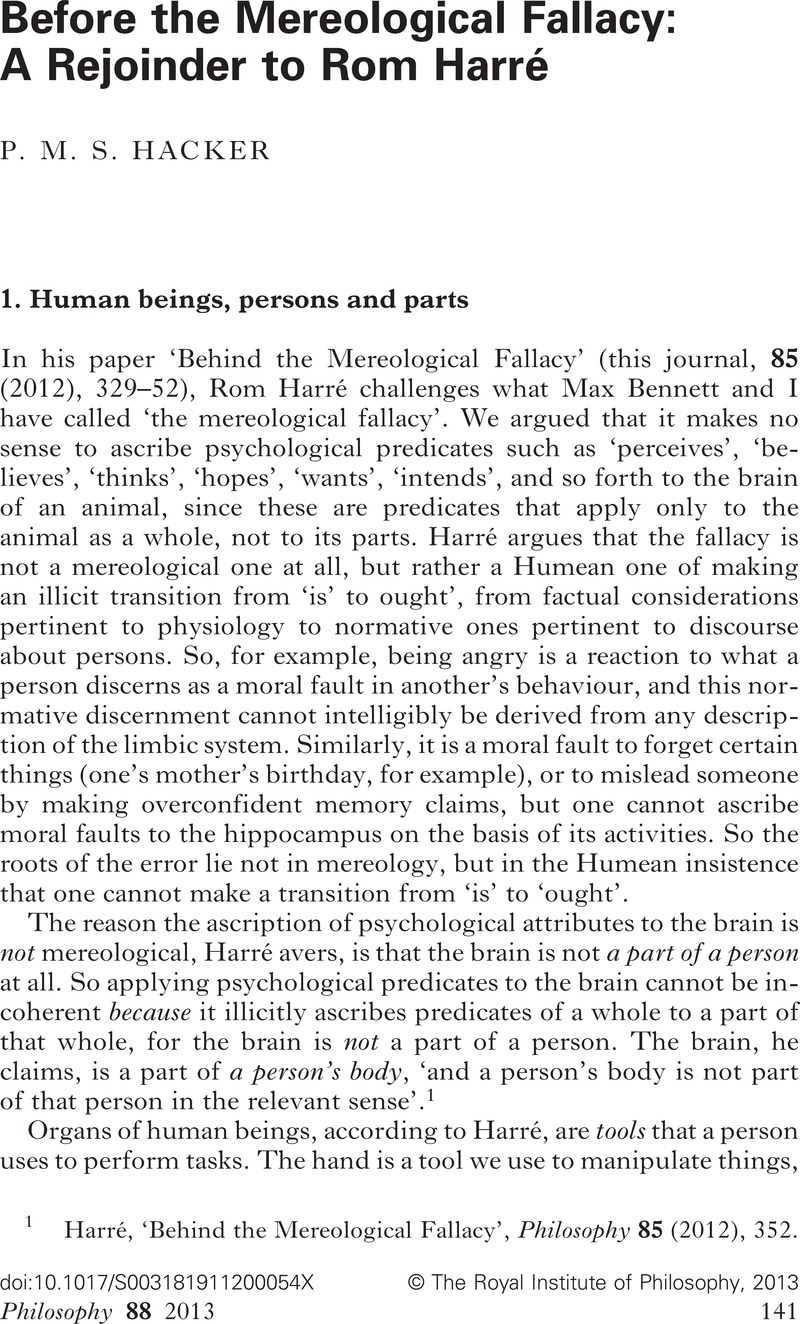Article contents
Before the Mereological Fallacy: A Rejoinder to Rom Harré
Published online by Cambridge University Press: 04 January 2013
Abstract

- Type
- Discussion
- Information
- Copyright
- Copyright © The Royal Institute of Philosophy 2013
References
1 Harré, ‘Behind the Mereological Fallacy’, Philosophy 85 (2012), 352.
2 Bennett, M. R. and Hacker, P. M. S., Philosophical Foundations of Neuroscience (Blackwell, Oxford, 2003)Google Scholar, 73.
3 Searle, J. R., ‘Putting Consciousness back in the Brain: Reply to Bennett and Hacker’, in Bennett, M., Dennett, D., Hacker, P. and Searle, J., Neuroscience and Philosophy: Mind, Brain, and Language (Columbia University Press, New York, 2007)Google Scholar, 107.
4 We replied in Neuroscience and Philosophy, 133–5.
5 The Physical Basis of Mind, 441.
6 I have elaborated this distinction, which is crucial for the resolution of the mind/body problem, in Human Nature: the Categorial Framework (Blackwell, Oxford, 2007)Google Scholar, ch. 9.
7 ‘Behind the Mereological Fallacy’, 338.
8 ‘Behind the Mereological Fallacy’, 350.
9 Rather surprisingly, Harré says that organs are substances (337). But this is mistaken. A functional part of a living substance is not itself a substance. For elaboration, see Human Nature: the Categorial Framework, 42–5.
10 See von Wright, G. H., The Varieties of Goodness (Routledge and Kegan Paul, London, 1963)Google Scholar, III – 8.
- 5
- Cited by


